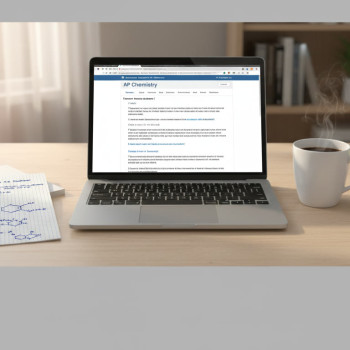Introduction: Why Accuracy Matters More Than Speed
AP exams are as much about steady precision as they are about content knowledge. Whether you’re bubbling answers on a traditional optical answer sheet or clicking through a digital interface, small errors can cost big points. This guide walks you through practical, human-tested strategies for avoiding the slips that turn an A into a B. We’ll compare bubble sheets and digital components side-by-side, explain common pitfalls, and offer clear tactics you can start using today — plus realistic examples and a handy comparison table to visualize trade-offs.

Understanding the Two Testing Worlds
At a glance, the two formats feel different: the physicality of a bubble sheet versus the click-and-scroll rhythm of a digital exam. But beneath that surface, the objective is identical — record your intended answer accurately. Knowing the underlying mechanics helps you design habits that reduce errors.
Bubble Sheets: The Classic Precision Task
Bubble sheets (optical mark recognition forms) reward neatness and consistency. They are unforgiving of stray marks, incomplete fills, and misalignments. Your answer must align exactly with the row and column the grading scanner expects.
Digital Components: The New Rhythm
Digital testing offers conveniences — clear navigation, instant question transitions, and sometimes integrated tools like built-in calculators or timers. But UI quirks, accidental clicks, and session timeouts introduce new error modes. Instead of pencil pressure, you must manage attention, cursor control, and interface literacy.
Top Accuracy Risks—and How to Fix Them
Here are the most common ways students lose points when transferring knowledge into recorded answers, and specific fixes you can adopt immediately.
Misaligned Rows and Columns (Bubble Sheets)
- Risk: Bubbling the answer one row above or below the intended question, especially after skipping a question or when distracted.
- Fix: Keep a straight-edge (like a frequent-use index card) under the current row while filling. Mark the question number on the sheet every 10 questions if allowed. Visually check every 5th answer.
Partially Filled or Light Marks
- Risk: Light or incomplete marks may not register on the scanner.
- Fix: Use the recommended pencil grade (often #2) and fill bubbles completely. Practice a consistent pressure and shading method during practice tests — muscle memory helps on test day.
Accidental Double-Bubbling
- Risk: Marking two bubbles for one question when you meant one — some scanning systems treat that as blank.
- Fix: If you change an answer, erase thoroughly. When in doubt, leave a clear single mark. On digital tests, be mindful that toggling answers may highlight multiple choices if the UI supports multi-select for certain question types.
Interface Misclicks and Navigation Errors (Digital)
- Risk: Skipping a question, inadvertently submitting an answer, or failing to save because of an overlooked confirmation.
- Fix: Before moving on, visually confirm the selected choice is highlighted. Use the exam’s review flags to mark questions you want to revisit. If there’s a review panel or question map, check it during each break.
Timing Mismatches and Last-Minute Rushing
- Risk: Rushing at the end leads to sloppy bubbling or clicking the wrong answer under time pressure.
- Fix: Build time checks into your plan. For example, in a 60-question section with 60 minutes, aim to finish 20 questions every 20 minutes, leaving the final 10 minutes for careful review and transfer accuracy.
Practical Routines to Improve Accuracy
Habits beat hope. Adopt a few routines and you’ll see fewer teller errors on exam day.
Consistent Workspace and Tools
- Use the recommended writing instrument. For bubble sheets, keep 2–3 sharp #2 pencils and a high-quality eraser. For digital tests, ensure your device (if provided) is familiar and that you know how to use any on-screen tools.
- Simulate test conditions in practice. If you’re using digital practice tests, use the same browser, OS, or testing app if possible.
Micro-Checks Every 10 Questions
Every 10 questions, pause for a 15–20 second accuracy check: confirm the question numbers you answered match the bubbles or on-screen answers. This small habit catches alignment and off-by-one errors early.
Flagging and Smart Review
Don’t spend too long on any one question. Flag it, move on, and return during your review period. When you revisit, re-read the question and your initial thought — often the first impression was right and overthinking can cause mistakes.
Example: How Small Errors Add Up
Consider a student taking an AP exam who makes three small errors: misaligns three bubble rows, leaves two answers lightly filled, and double-bubbles one question. That could easily translate to 5–7 lost points — sometimes the difference between a 4 and a 5. The arithmetic is simple: accuracy habits are high-leverage.
Comparison Table: Bubble Sheets vs Digital Components
| Aspect | Bubble Sheets | Digital Components |
|---|---|---|
| Common Errors | Misalignment, light marks, stray marks | Misclicks, accidental submissions, session timeouts |
| Fix Strategy | Use straight-edge, consistent pressure, erase fully | Confirm highlights, use flags, know the UI |
| Time Pressure Impact | Rushed bubbling creates more scanning failures | Rushed navigation causes skipped questions |
| Practice Focus | Pencil technique and sheet alignment | Interface fluency and review checklist |
| Recovery Options | Erase and correct carefully; proctor assistance if sheet damaged | Use exam’s review controls; notify proctor for technical issues |
Review Checklist: What to Do in the Last 10 Minutes
Final minutes are prime time for catching avoidable errors. Use this quick checklist during your last pass.
- Confirm question numbers match row numbers (bubble worksheets) or that each intended selection is highlighted (digital).
- Check for any double marks or unusual shading on bubble sheets.
- On digital, open the question map and verify no questions are left unintentionally blank.
- Take two deep breaths before the final submission — pressure squeezes mistakes in.
Practice Strategies That Build Accuracy
Accuracy is a skill you can train. The following drills are actionable and map directly onto test-day behavior.
Timed Bubble-Only Drills
Take a mini-section of 20 questions and practice filling an actual bubble sheet under time pressure. After each drill, grade the OMR results against your intended answers and note mismatches — were they content mistakes or transfer mistakes?
Interface Walkthroughs
For digital components, run through the testing interface without the pressure of content. Learn how to toggle, flag, review, and navigate. Repeat until these actions become second nature so they don’t steal cognitive resources during the real exam.
Simulated Distractions
Practice under mild distraction — a ticking clock or background noise — to build focus resilience. It’s not about creating chaos, it’s about training to notice and recover from brief disruptions without derailing your workflow.
How Sparkl’s Personalized Tutoring Can Help (Where It Fits)
Targeted coaching can accelerate the development of these accuracy habits. Sparkl’s personalized tutoring offers 1-on-1 guidance, tailored study plans, and expert tutors who can observe your bubbling technique and digital workflow in practice sessions. Their sessions often include AI-driven insights that point out recurring pattern errors (for example, consistent off-by-one bubbling), and then provide drills customized to correct them.
Real-World Example: From Panic to Precision
Ella, a high school junior, took an AP practice test and scored well on content but dropped points to transfer mistakes — she frequently bubbled one row too low after skipping long questions. Her tutor worked with her for three weeks on a simple routine: a straight-edge card, numbered checkpoints every 10 questions, and a 20-minute timed review habit. On the real exam, Ella reported feeling calmer and more deliberate. Her scanned answer sheet aligned cleanly, and she gained two score points compared with previous practice — a clear illustration of how process-focused changes, not just content study, drive score improvements.
Dealing with Technical or Proctoring Issues
Sometimes problems fall outside a student’s control: a damaged bubble sheet, a testing computer glitch, or a disrupted internet connection. Here’s how to manage these scenarios:
- Alert the proctor immediately. Documenting the issue early creates an official record.
- If a paper sheet is damaged, request a replacement and verify any partially-completed answers with the proctor when allowed.
- For digital issues, follow the exam platform’s troubleshooting guidance and notify staff. Don’t try to fix major technical failures yourself during the exam window — get support.
Psychological Tips to Reduce Simple Mistakes
Most transfer errors are cognitive slip-ups. Managing stress and attention reduces these mistakes dramatically.
Micro-Breathing and Reorientation
When you feel your attention slipping, pause for a controlled breath cycle: inhale 4 seconds, hold 2 seconds, exhale 6 seconds. Even one slow cycle reduces heart rate and clears the mind for better motor control — ideal before bubbling or making a final submission.
Anchor Routines Between Sections
Create a short ritual between sections: close your eyes for five seconds, stretch your shoulders, and reset. This compartmentalizes sections and reduces carryover errors like misaligned rows caused by rushing straight from one section to the next.
Common Myths and the Truth About Accuracy
- Myth: Faster bubbling equals higher scores. Truth: Fast but sloppy bubbling destroys scores more than careful pacing.
- Myth: Digital means fewer errors automatically. Truth: Digital changes the error modes — fewer stray marks, but more misclicks and navigation mistakes if you’re unfamiliar with the platform.
- Myth: If I’m confident, I don’t need to review. Truth: Confidence without checks invites preventable mistakes. A quick verification routine beats untested confidence every time.
Practical Checklist to Print and Bring to Practice Sessions
- 2–3 #2 pencils (for bubble practice) and an eraser
- Straight-edge or index card to keep rows aligned
- Timer that can track mini-checks (every 10 questions)
- Practice exam in the same medium as your expected test (paper or digital)
- Checklist for the last 10 minutes: number alignment, double-mark check, blank answer check, and final breath

Measuring Progress: Metrics That Matter
Track these metrics during practice to know if your accuracy habits are improving:
- Transfer Error Rate: Number of answers recorded incorrectly relative to intended answers (aim for under 1%).
- Time Per Question: Maintain steady pacing; avoid late-section spikes in time spent per question.
- Review Correction Rate: Percent of flagged questions that change to correct answers during review — if it’s low, your flags may be misused.
Final Thoughts: Precision Is a Habit, Not an Accident
AP success comes from marrying content mastery with disciplined test habits. Bubble sheets and digital components are simply different stages on which that discipline plays out. Build small, repeatable routines — micro-checks, controlled breathing, interface familiarity, and realistic practice — and those routines will carry you through the pressure of the big day.
Consider integrating occasional coaching sessions into your prep to accelerate habit formation. Sparkl’s personalized tutoring can be especially helpful for students who want targeted feedback on their transfer techniques and a plan that adapts to observed mistakes, using 1-on-1 guidance, tailored study plans, expert tutors, and AI-driven insights to track persistent patterns and craft corrective drills.
Accuracy is not glamorous, but it is the quiet companion of high scores. With habits in place and a few smart checks, you’ll walk into the exam room confident that your answers truly reflect what you know.
Quick Takeaway Checklist
- Practice the exact medium (paper vs digital).
- Use tools: straight-edge, proper pencil, and timer.
- Perform micro-checks every 10 questions.
- Flag—don’t stall—on difficult questions.
- Do a final 10-minute sweep focusing on transfer accuracy.
Ready to Practice?
Start with one small change this week: add a 10-question bubble-only drill or an interface walkthrough to a study session. Track one metric (transfer error rate) and see how quickly small tweaks compound into stronger, more reliable performance.
Good luck — stay calm, stay intentional, and let precision be your secret advantage.






















No Comments
Leave a comment Cancel